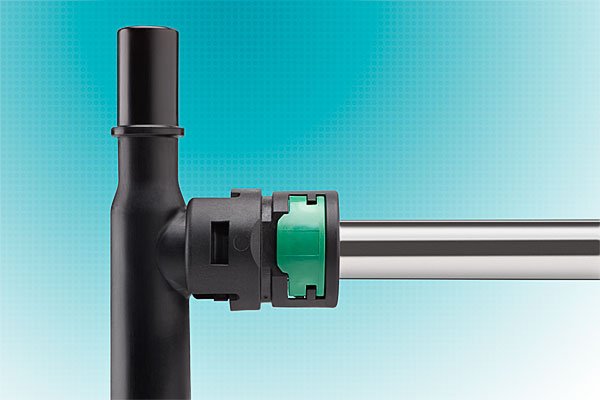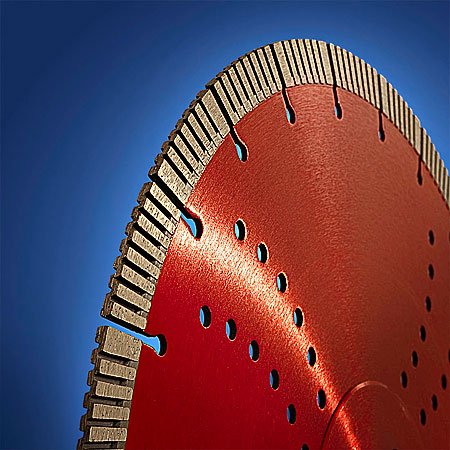Great post on photo web sites!
Photography
Advertising Photography Tools
I just discovered a feature in Capture One that simplifies post production - smart albums! Typically during a shoot, I’ll mark photographs that I want to deliver to my client by pressing the minus key. This marks the photograph with the red color tag. Later, when I want to process the images, I sort by “color tag”, and all of the marked photographs are together at the top. This makes it easy to work on the selected images, adjusting and processing them all at once. On shoots with a large number of captures, I’ll create multiple capture folders. Capture One tends to slow down when you get several hundred captures in a folder; I think it’s actually because of the system software. In any event, I end up with a bunch of capture folders with marked images. In the past, I would move the marked images to a “selects” folder, where I could work on them all together. Now, I can create a smart album that works much like smart folders in OS X. I can select images using a large array of criteria including color tags. It’s a virtual folder, so the files are not actually moved. Now I can work on groups of images without moving them. This makes it easer to go back and look at selected images, change my mind, remove or add selects, and see them with others shot at the same time. This is going to save me a lot of time!
Food Photography
I love food photography, partly because I love to cook, and eat, but also because it’s quite challenging. Everything must come together at the same time. Often the window of time that food looks good is quite short, so everything has to be ready.  I think food stylists are absolutely essential. It’s true that they are expensive, and that they can slow things down, but the difference in outcome is dramatic. Really! Absolutely worth every penny. I’ve had clients tell me that their chef is great at presentation, but making food look good in a photograph is fundamentally different. This is especially true for advertising and packaging photography.
I think food stylists are absolutely essential. It’s true that they are expensive, and that they can slow things down, but the difference in outcome is dramatic. Really! Absolutely worth every penny. I’ve had clients tell me that their chef is great at presentation, but making food look good in a photograph is fundamentally different. This is especially true for advertising and packaging photography.
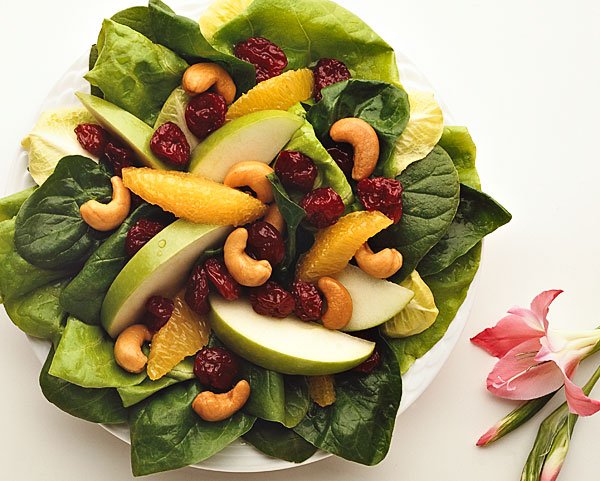 Great food photography starts in pre-production with meetings with the client / chef, the art director, the food stylist, and the photographer. Everyone has to be on the same page about the recipes, the look, the props, and the schedule. There is usually a lot more to pull together before a food shoot than for normal product photography. Before and during the shoot, client involvement, good communication, and teamwork are all essential.
Great food photography starts in pre-production with meetings with the client / chef, the art director, the food stylist, and the photographer. Everyone has to be on the same page about the recipes, the look, the props, and the schedule. There is usually a lot more to pull together before a food shoot than for normal product photography. Before and during the shoot, client involvement, good communication, and teamwork are all essential.
Anything with Wheels!
Dave and I recently finished a shoot for Raymond. The project included shooting in the studio (Tom) and on location in a warehouse (Dave). The project included video as well, so we had to coordinate closely with the video crew to make everything work smoothly. We had two excellent models from Productions Plus. Thanks to terrific clients, organized pre-production and teamwork, the shoot came off smoothly!
Recent work
I recently finished a project shooting a TurfEx RS7200. A motorized spreader / sprayer for commercial turf management. It’s a new product, so we spent a little more than half a day shooting a few different angles in the studio. We started with what I call catalog angles, that do a good job of describing the product. If you are buying something, it’s a good idea to know what you're getting. Then we did some more interesting angles, that while less informative, have more visual impact. I love shoots like this!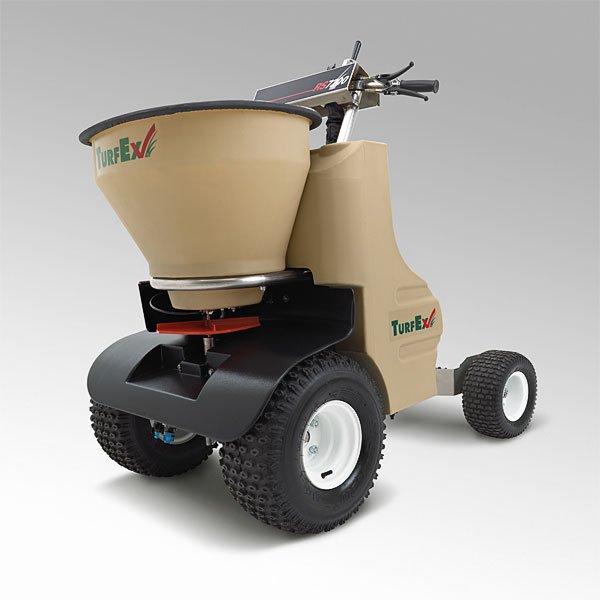
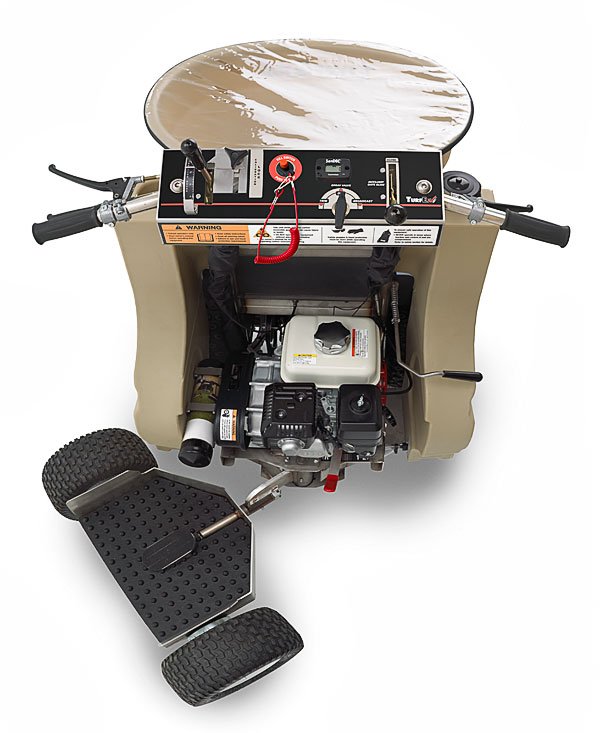
Merry Christmas - Happy Hanukkah - Happy New Year
As the end of the year draws near, I want to thank all of our clients and vendors for their hard work and support. There have been lots of changes in Michigan, advertising and the photo industry over the last few years, and with everyone’s help we have been able to continue doing what we love. Lets hope that the year ahead holds health and happiness for all of us.
The Value of Post Production
At the end of a shoot, after cleaning up the studio, the post production begins. This can vary between simply adjusting exposure, color, and contrast, all the way to extensive retouching, compositing and digital imaging. I have had clients ask for raw files, (sometimes called digital negatives) and that always makes me uneasy. It’s not that I think no one can process them as well as I can. I am certain many people can do better; I am afraid that they will not. I am judged by the outcome, and I have come to enjoy the control that being involved in the post production affords me.
Rare is the photograph that cannot be improved in post production. Even while shooting in the controlled environment of a studio there are usually things that can be done to improve it. I should say that if I come across an image that is six months old I can usually find things that I would like to change! After carefully capturing the best image possible, the next step is to process the raw files. I use Capture One for both capture and processing. I recently upgraded to version 6. I am now able to do many more of the things that were once done in Photoshop, while processing. The advantage is that these edits are non-destructive. That means the clients (or me) can change their mind and I can go back and make changes. In addition when these edits are done while converting from the high bit format of raw files to the standard 8 bit format, a higher quality is maintained. I generally start with the exposure, because the color and contrast are dependent on the exposure. Color balance comes next, most often starting by sampling a gray card included in one of the captures. Then I further adjust the color to suit the shot. Finally I adjust the contrast. I am not fond of the contrast slider in Capture One. I prefer the more granular control in levels or curves to get the look I am after. Finally, I make sure that the pre-sharpening is correct. Ever since I read an amazing book by Bruce Fraser called, Real World Image Sharpening, I use a two-step process for sharpening. The first step is the pre-sharpening. I used to do this in Photoshop, I am now able to do this during processing in Capture One. The second step is output sharpening. For this I use NIK Sharpener. It sharpens an image differently depending on output device and size. Output sharpening is always the final step, performed after all the retouching or imaging.
Done well, post production can make a great image greater, or an average image acceptable. Done badly, well, it’s just sad. All of the pieces need to be in place, pre-production, planning and preparing for the shoot, production, the shoot, and the post production. Surrounding all of this of course is the concept, and execution of the piece the photograph is in. Without an idea to communicate, and excellent design...
5 Reasons for a Great Business Portrait
- Social Media: Are you a member of LinkedIn or Facebook, Google+, Twitter or any number of online groups? You’ll want to present yourself as a confident and capable professional. This is the impression a professional portrait can deliver.
- Business Cards: Many corporate business cards feature headshots. Your driver’s license photo would do, but is that how you want to present yourself to clients and colleagues?
- Press Releases: Executive portraits are often included with press releases. You’ve won an account or a promotion. You need to look your best, and only a portrait by a professional photographer will do.
- Newsletters, Company Publications and Advertising: Does your company or organization have newsletters or other publications. Frequently these incorporate photography and business portraits. Think about the image you want to convey with your portrait.
- Finally, Company Websites: Often, but not always, portraits are included on company websites. Sometimes there is a group photo, to say “we are a large organization we can handle your account.” Other times it is individual portraits of the partners, principles, salespeople or everyone.
What ever your reason for needing an executive portrait or business Portrait, finding a professional photographer is not difficult. If you search Google or Bing using the phrase “executive portrait” and include a city or state name, the search should bring up plenty of photographers to choose from. Next look at their work to see if it is similar to what you want. Talk with the ones you like. Find out what they charge. Ask if they have a studio, how long have they been in business. Find out who are their other clients. You’ll want to select a studio that has a solid history and will be around for a while.Establishing an ongoing relationship with a photography studio has benefits. You don’t have to search for and price several photographers every time you have a need another executive portrait, You will have confidence that the photographers you have already chosen can produce a quality product. By choosing one studio for your ongoing executive portrait needs, you’ll also get a consistent “look” for all the portraits.
Executive portraits come in many flavors, from a simple head and shoulders shot on a plain or mottled background to high production value environmental portraits. Portraits can be shot at your facility or at a photo studio. Expect to spend more for more complicated shots or backgrounds. At our studio, we charge a little more to shoot on location, because it’s more work.Carefully choosing when to schedule a shoot can save you money. A sales or board meeting is a good time to schedule a shoot because many portraits can be done with one set up. We offer discounts when shooting more portraits per session. Environmental portraits (portraits taken on location) can range from modest to high budget affairs. Executives are often pressed for time, and we can set up lighting and composition in advance so they need only step into the set and spend a few minutes. Make-up stylists can also be an important aspect of a portrait session, offsetting the extra expense. Environmental portraits shot with available light or with minimal supplementary lighting offer a budget conscious alternative. Work closely with your chosen photographer to identify cost conscious ways to get the executive portraits that your company needs.
Con Leche Watch Shoot
I recently did a shoot for Con Leche Watch. It was interesting for a couple of reasons. First, it’s a clever and attractive product. It’s a watch for breastfeeding mothers to help keep track of when they last fed their baby and from which side. This may sound trivial, but if you are a sleep-deprived nursing momma, I’m sure it’s a godsend. (I’ve only been a sleep-deprived papa, so it’s only an educated guess...)
The watch comes in three models and with a choice of several strap colors. My client wanted a web customer to be able to select the watch model and then the strap without the images jumping around on the screen. This turned out to be best solved in post-production. After shooting all the watches and bands, I put all the images into a single-layered photoshop file, then aligned and retouched them. By turning layers off and on, all of the various combinations are possible. I’ve created an animated GIF to illustrate the concept.
The real appeal of the watch is that it removes a distraction and allows moms to better care for their babies. The challenge for me was to capture the enormous emotional and physical bond between mother and child.
Let me know what you think!
Studio Rental Math
There are many fewer studios in metro Detroit than there were a few years ago, because there is less work. We still have a studio, but I’ve wrestled with the idea of not having a studio. In other areas, notably the East and West coasts, some photographers have studios, but it’s not uncommon for a photographer to rent a studio just for shoot days, and include it in their bill. I don’t know the reason, but in the midwest, or at least in Metro Detroit, the business model has always been, except for car photography, studio rental is included in the fee. This makes it a little more difficult, but not impossible.The overhead for our studio is about $32,000 a year. We rent our studio for $650.00 / day. Unless you shoot in studio a lot, you may be better off renting, even if you can’t bill the entire rental fee. You only have that overhead when your shooting. In addition if you develop a relationship with a studio and you rent there often you could likely bargain them down a little.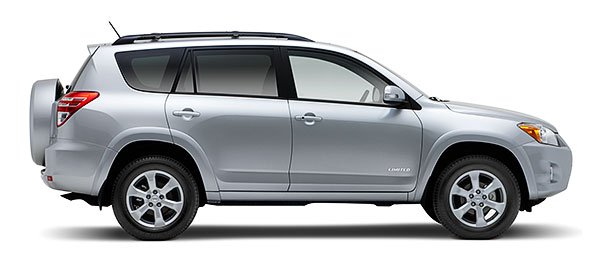 Working in the studio is about 90% of what I do. That’s why I’ve chosen to have my own. We rent it out to help with the overhead. The day may come when it no longer makes sense, but it hasn’t come yet. How does it work for you?
Working in the studio is about 90% of what I do. That’s why I’ve chosen to have my own. We rent it out to help with the overhead. The day may come when it no longer makes sense, but it hasn’t come yet. How does it work for you?
Digital WorkFlow
Film was Simpler, but Harder
Back when I shot on film, everything was on transparencies. That made photography more difficult - an unforgiving medium. There was little recourse if highlights were burned out, shadows too deep or color was off. Still, you work with what you’ve got. I learned to pre-visualize, shoot Polaroids, do color balance tests before the shoot, and when the budget allowed, I’d wait for film. On the other hand, when I handed over the film, I was finished.Now, I am further into the workflow. This gives me way more flexibility to adjust, after the shoot, color, contrast, and exposure. Often I do the retouching, and deliver color corrected tiffs. Then I archive the job in case the files are needed again. I thought it might be interesting to share the process in more detail.
The shoot
Because this is about the workflow, I’ll ignore all of the pre-production and jump right to the shoot. I almost always shoot tethered. I like the knowledge that I’ve got it, without any waiting. It also gives clients a preview of what they’re getting. The laptop screen is calibrated with Eye-One (made by x-rite) so I’m pretty sure I’ve got the color right to start. I shoot with Capture One software, because I’ve got a Phase One back, and it works very well with our Canons too. Apart from doing an excellent job processing RAW files, one of the things I like about Capture one is that it creates a folder structure for every job. A session folder contains a capture folder, a trash folder, and an output folder.
I shoot with Capture One software, because I’ve got a Phase One back, and it works very well with our Canons too. Apart from doing an excellent job processing RAW files, one of the things I like about Capture one is that it creates a folder structure for every job. A session folder contains a capture folder, a trash folder, and an output folder.
After the Shoot
After the shoot, I simply copy this folder to the “job” drive on our server. I am then able to work off the server to make all the adjustments to the captured images and process them to make tiffs. If I’m doing the retouching, I’ll use Photoshop (big surprise) and create new folders inside the session folder that contains all of the files I’re working on. This keeps all the files for a each project together and organized. The server automatically backs this drive up to an external hard drive every night. The nightly backup keeps versions of the files for 30 days, so it’s possible to go back to get older versions of files, or deleted files if necessary. After the retouching is completed, and the job is delivered, the job folder is copied to an archive drive, also on the server. Once a month, I duplicate everything on to a yet another hard drive and take it home for safe keeping. So I have several terabytes of online archives of old jobs with a back-up off-site in case of drive failure or natural disaster.
Dave shot the Landscape it's stripped into. Teamwork is everything.I’d love to hear what you think or about your workflow.
Web Directories for Photographers
Web directories are a great way for photographers to get noticed on the web. There are photographer directories that help people searching for photographers find them. A new directory called USA Photographer Directory seems to hold promise. It’s edited by hand, 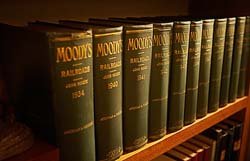 so there is an assurance of quality. Every listing is free; it does not sell links, as so many of the others. Navigation is intuitive, making it easy to find the photographer you need.Other directories are worthwhile too. The Commercial Photographers Directory uses Google Maps to help you find photographers in your area. The Michigan Photographer Directory is a directory just for Michigan. General directories are valuable as well. Yahoo costs $299.00 a year (to pay the editors) and inclusion is not guaranteed. This seems odd on the face of it, but it is the feature that makes directories valuable. By having someone curate the directory, you reduce or eliminate spam and poor web sites. DMOZ is another good directory, and it is free because it has volunteer editors.In general, it’s a good idea to stay away from photographer directories whose reason for existence is search engine optimization, that sell links, or promote themselves as being SEO friendly. What you want is for a directory to drive traffic to your web site that is interested in buying your services. If it helps your performance in search engines, that’s a bonus.
so there is an assurance of quality. Every listing is free; it does not sell links, as so many of the others. Navigation is intuitive, making it easy to find the photographer you need.Other directories are worthwhile too. The Commercial Photographers Directory uses Google Maps to help you find photographers in your area. The Michigan Photographer Directory is a directory just for Michigan. General directories are valuable as well. Yahoo costs $299.00 a year (to pay the editors) and inclusion is not guaranteed. This seems odd on the face of it, but it is the feature that makes directories valuable. By having someone curate the directory, you reduce or eliminate spam and poor web sites. DMOZ is another good directory, and it is free because it has volunteer editors.In general, it’s a good idea to stay away from photographer directories whose reason for existence is search engine optimization, that sell links, or promote themselves as being SEO friendly. What you want is for a directory to drive traffic to your web site that is interested in buying your services. If it helps your performance in search engines, that’s a bonus.
Silk Purse from a Sow’s Ear?
Well maybe not a silk purse, or come to think of it, a pig’s ear. Still, professional photographers are often asked to make great photographs from a plain or unfinished parts. Things most people would consider ugly or at least unattractive. Industrial or corporate photography is frequently doing this. Personally, I love the challenge.
Design is at the heart of interesting images. Many industrial parts have interesting design elements. I think it is necessary to see the parts as design elements, and not what they actually are. Circles, lines, shapes, repetition, texture and color are all very helpful. The saw blade has a lot going for it from the beginning. It’s red, and round, and has a brushed finish, as well as a bunch of little holes that add interest. Add a contrasting color, an interesting viewpoint, lighting that accentuates these qualities and some post-production magic, now you’ve got an interesting photo.
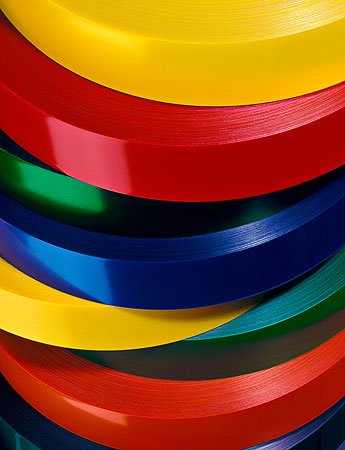 The rolls of report binding tape, (would you have guessed that?) are similarly blessed with color, circles, texture and repetition.
The rolls of report binding tape, (would you have guessed that?) are similarly blessed with color, circles, texture and repetition.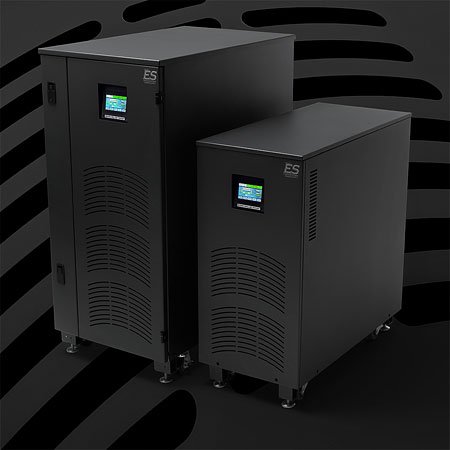
The large network server Room UPS’s were in some ways, a greater challenge. Large black boxes with little decoration, functional, but not much to look at. I repeated the design of the grill as a surface for them to sit on, and they became moody monuments.
Hello world!
I thought I’d start out this blog by telling you a little about myself. I've been a commercial photographer for about 30 years. I've been with Blue Sky Photography for the last twenty. As co-founder and part owner I can tell you it’s quite a ride! There are highs and lows, new technology, and new business models. It’s always been, and continues to be, a blast. The people I work with are great. So in this blog, I’ll talk about the industry, the gear, projects I’m working on, anything else that seems important and, of course, it will be peppered with photographs.
The Value of Commercial Photography
Your Image
What is the difference between high quality commercial photography and amateur or semi-professional photography? A professional photographer is able to consistently produce high quality images that represent your product or service in the best light. How do you want your company’s image projected? Your brother-in-law with his new DSLR is pretty good at taking pictures of his kids, but does he have the knowledge and experience to portray your product or service well? What impression do you project with poorly designed sales materials and amateurish pictures?
Ideally, you want potential customers to see your website, mailer or brochure and realize that you have a well managed company that produces high quality products or services at a fair price. You offer good value and can be trusted.
But it costs so much!
Yes, but, you get what you pay for. High quality commercial photography is not cheap. Neither is getting your car fixed at the dealership or hiring a plumber. Still, it makes sense to look for value. You need to ask yourself some questions. What is the useful life of the photography you need? How much will sales be affected by the quality of the photographs? How many visitors to your website will move on to the next site because your product or service looks amateurish. If you can amortize the use of the images over three years, good photography seems like a wise investment. A better company image, better brand recognition and repeat business are dividends you are likely to enjoy.
It’s Your Business
Commercial photography is not only about putting your product or service in the best light, it also triggers a positive emotional response.
So it turns out that high quality commercial photography is not expensive, but an excellent investment in the future of your company.

